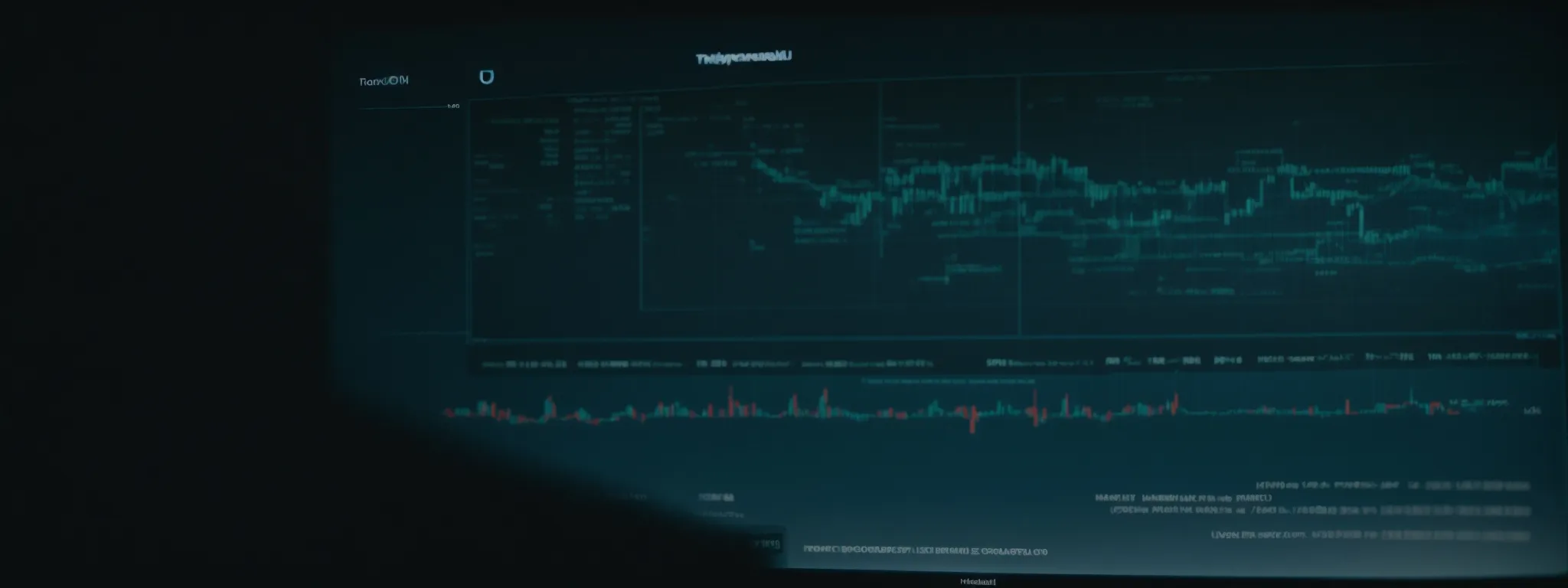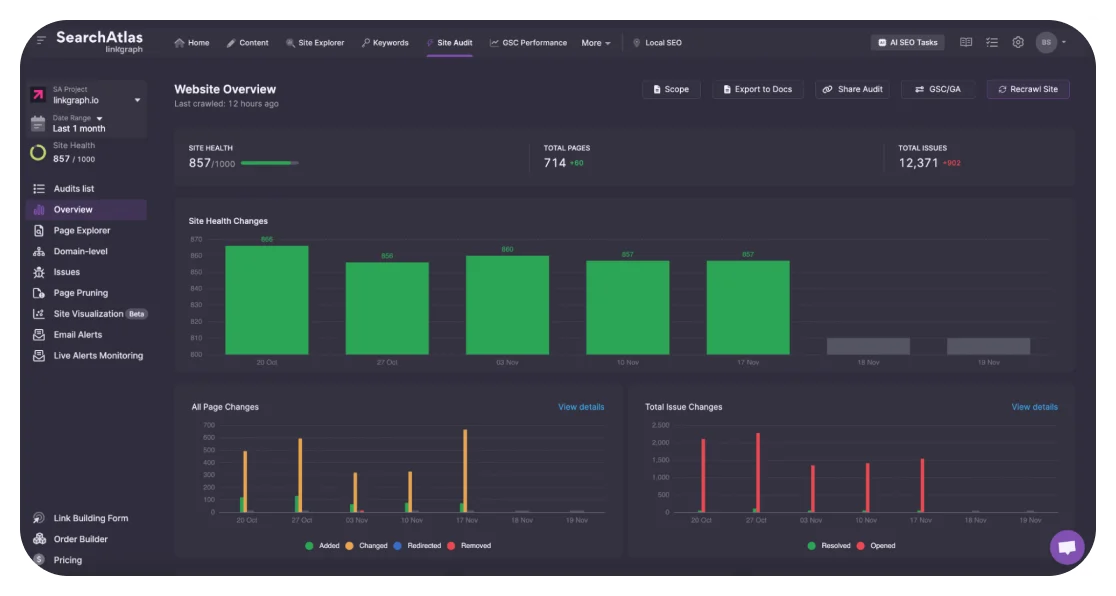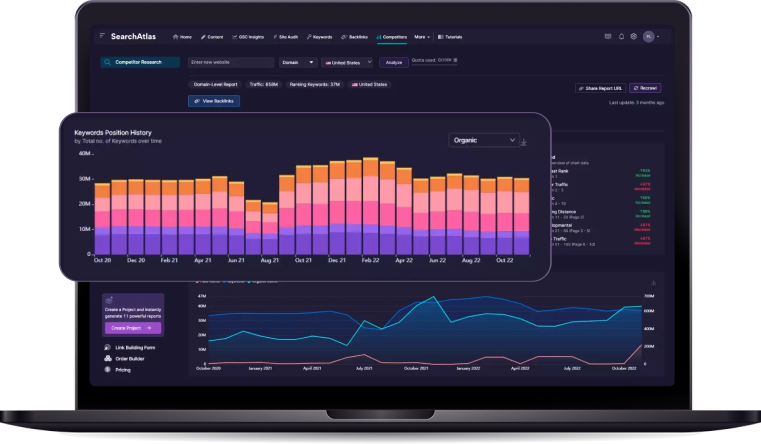Enhancing Content Integrity With Trusted Web Timestamping Services
In an age where digital content floods the internet, establishing the veracity and origin of said content becomes paramount for publishers and content creators.
Timestamping, a sophisticated digital mechanism, ensures that every piece of content is verifiably anchored in time, fostering trust between publishers and their audience.
This process not only guards against content manipulation but also bolsters the credibility of the digital documents.
It’s a key pillar in maintaining content integrity in a rapidly evolving digital landscape where trust is a valuable currency.
Keep reading to uncover the inner workings of web timestamping and how it shapes the future of online content authenticity.
Key Takeaways
- Trusted Web Timestamping Enhances the Integrity and Credibility of Online Content
- Blockchain Technology Underpins the Immutability of Timestamping, Offering Transparent and Verifiable Content Records
- Timestamping Not Only Protects Content Creators’ Rights but Also Strengthens Their Legal Defense Against Infringements
- Users’ Confidence in Digital Content Is Significantly Increased by the Transparency Provided by Timestamping
- Anticipated Advancements in Timestamping Include AI Integration and Global Standardization of Practices
Understanding the Role of Timestamping in Content Integrity

In today’s digital landscape, the veracity of online content has become a paramount concern for consumers, publishers, and policymakers alike.
Web timestamping emerges as a pivotal technology, serving not only as a digital notary but also as a backbone for content integrity across various platforms.
By embedding a verifiable timestamp, website owners and content creators can offer transparent evidence of the original publication time and subsequent updates, fostering trust and accountability.
This practice stands in stark contrast to traditional integrity measures, which typically focus on endpoint security or data encryption.
As an elemental component of blockchain technology and the burgeoning concept of the Trusted Web, timestamping services are revolutionizing the way digital information is authenticated, presenting a robust alternative for safeguarding the truth part of any document or publication.
Define What Web Timestamping Is
Web timestamping refers to the process of recording the exact moment a piece of digital content is created or modified, thus certifying its existence at a particular point in time. This mechanism is crucial in establishing a chronology for documents and publications, enabling users to verify the authenticity and originality of information they encounter online.
Incorporating the principles of blockchain technology, timestamping generates a cryptographic seal, often referred to as a “nonce,” which acts as immutable evidence of the timestamp. By anchoring data to a blockchain, it prevents alteration, forging timestamps, and ensures the long-term preservation of the content’s integrity, promoting transparency in digital interactions.
Explore the Importance of Timestamps for Content
The sanctity of online information hinges upon the ability to establish its provenance and safeguard it against unauthorized amendments. Timely and accurate timestamping serves as the foundation for this process, enabling both creators and consumers to track the evolution of content with certainty and precision.
Trusted timestamping is not merely a technical feature; it is a commitment to integrity, enhancing the trust between publishers and their audience. By bringing transparency to the modification history of digital content, timestamps empower readers to discern the reliability of the information presented before them:
| Action | Timestamp | Significance |
|---|---|---|
| Initial Publication | 2023-01-25 10:00 UTC | Establishes content origination |
| Update/Revision | 2023-02-10 15:45 UTC | Indicates post-publication changes |
| Content Verification | 2023-03-05 09:30 UTC | Confirms integrity at a given moment |
Contrast Timestamping With Other Integrity Measures
Contrasting timestamping with conventional security practices such as endpoint protection, reveals a distinct focus on the lifecycle of information rather than on mere access restrictions. Endpoint security guards against unauthorized intrusion into networks, but timestamping addresses the need to establish an immutable record, ensuring that once content is released into the digital space, its chronology and revisions remain transparent and tamper-evident.
While encryption shields data from prying eyes, ensuring only authorized parties can view sensitive information, timestamping brings an additional layer of trust to the public sphere. It allows any spectator, regardless of their access rights, to view the historical footprint of a document, thereby supporting the veracity of the content without compromising confidentiality. This facilitates a more informed and trusting relationship between content producers and their audience, underscoring the importance of maintaining content integrity across the digital landscape.
The Technology Behind Trusted Web Timestamping

In the realm of digital content, the sanctity and reliability of information can be significantly bolstered by employing web timestamping services powered by blockchain technology.
As this innovative method of verification garners attention, understanding its intrinsic mechanisms becomes vital for any organization seeking to protect their digital assets.
This section will unfold the intricacies of blockchain-enhanced timestamping, walk through its multifaceted process, and delve into the security features of cryptographic timestamps, offering insights into a powerful tool for certifying content authenticity in an increasingly interconnected world.
Break Down How Blockchain Enhances Timestamping
Blockchain technology propels timestamping into a new stratum of security by leveraging its inherent characteristics, such as immutability and decentralization, to fortify the credibility of digital timestamps. Each timestamp is encapsulated within a blockchain block, which, once added to the chain, cannot be altered retrospectively without the consensus of multiple validators, thus ensuring the permanence of the content’s chronology.
The enhancement offered by blockchain also involves a public verification feature, where any interested party can independently confirm the authenticity of a timestamp without needing to trust a single central authority. This democratization of verification upholds the integrity of the content and fosters a transparent ecosystem where data authenticity can be ascertained with confidence.
Discuss the Timestamping Process Step-by-Step
The timestamping process begins with the document or publication in question being hashed, creating a unique fingerprint of the content at a specific point in time. This hash is then submitted to a blockchain network, where it is verified and added as a new transaction, effectively creating an unchangeable record of the content’s existence at that moment.
Upon completion of the transaction, a timestamp is generated and stamped onto the blockchain, securing the record alongside other blocks in the chain. The result is a public, auditable trail that authenticates when the content was published or modified, providing a layer of protection against post hoc alterations and unauthorized revisions.
Explain the Security Features of Cryptographic Timestamps
Cryptographic timestamps stand as robust sentinels of content legitimacy, employing a system of hashes and cryptographic proofs that are resistant to tampering. Once a document’s hash is secured on a blockchain, it becomes computationally implausible for any entity to retroactively alter the timestamp without detection, thanks to the architecture of chain-linked data blocks which would require an enormous amount of computational power to compromise.
Furthermore, these cryptographic timestamps provide a layer of security that goes beyond mere data entry, offering a verifiable trail that any user, regardless of their technical expertise, can trust. The security features inherent in this approach ensure that the origin and edits of a content piece are transparent, cementing a solid foundation for accountability and trust in digital communications.
Implementing Trusted Timestamping on Your Website

Embracing the era of digital transparency, organizations are increasingly cognizant of the pivotal role trusted timestamping services play in certifying the authenticity of their online content.
Whether for an intricate research report, policy documentation, or a dynamic webshop’s content, applying a timestamp safeguards the integrity and veracity of the underlying information.
This subsection delves into the types of content that gain the most from timestamping, provides a comprehensive guide to integrating this technology into existing digital platforms, and discusses best practices for managing timestamped records effectively.
By dedicating attention to these areas, website owners and content managers can harness the power of trusted web timestamping services to bolster the credibility and trustworthiness of their digital offerings.
Identify Content That Benefits From Timestamping
Transactional documents such as contracts, patents, and legal agreements are prime candidates for the enhancement offered by timestamping. The certifiable record of their creation and modification times reinforces their legal veracity, which is paramount for any organization navigating the complexities of regulatory compliance or intellectual property rights.
Original content, including press releases, scholarly articles, and news stories, also gains an additional layer of credibility with the utilization of trusted web timestamping services. Organizations can safeguard their reputation by providing immutable evidence of the chronology of their publications, which in turn, solidifies the public’s trust in their brand.
Step-by-Step Guide to Implementing Timestamps
The journey towards integrating trusted timestamping on a website commences with selecting a reputable service that harnesses blockchain technology for authenticity verification. Following this, website owners must decide the specific pages or documents they wish to timestamp, be it policies, articles, or legal documents, ensuring a credible trail of their evolution is readily available to visitors and search engines alike.
Once the decision is made, the next step involves the actual implementation, which requires embedding a unique code provided by the chosen timestamping service into the HTML of the site. This code acts as a bridge connecting the content to its blockchain-based timestamp, thereby securing proof of existence and establishing a firm ground of trustworthiness for the website’s digital assets.
Best Practices for Maintaining Timestamped Records
Meticulous record-keeping is paramount when managing timestamped records; therefore, organizations should routinely audit their timestamp entries for accuracy and completeness. Anomalies or discrepancies in the timestamp records pose a risk to content trustworthiness, thus a system to review and reconcile these records should be firmly in place.
For sustained integrity, it is advisable for website owners to consider incorporating redundancy in their timestamping process. Keeping multiple timestamp records through diverse blockchain services can serve as a safeguard against the unlikely event of a service interruption or failure, ensuring uninterrupted verification of content authenticity.
How Web Timestamping Services Protect Content Creators

In a digital ecosystem where content is king, creators are constantly navigating the precarious balance between sharing their work and protecting it.
Trusted web timestamping services emerge as a vital resource, providing an immutable record of digital creativity.
These services not only fortify the authenticity of work but also bolster legal defenses against potential infringements.
By delving into the advantages for creators, examining the judicial impact, and reviewing real-world instances where timestamping resolved disputes, this section seeks to illuminate the protective capabilities that web timestamping affords individuals and entities contributing to the ever-expanding digital content frontier.
Explore the Benefits for Content Creators
Content creators employ web timestamping services as a formidable deterrent against unauthorized use and plagiarism of their work. These services create an unassailable record of the original release or update of creative output, imbuing creators with the confidence to publicly share their contributions without compromising their rights.
The provision of a concrete publication history afforded by timestamping also serves as a robust legal tool. Creators can leverage the cryptographic proof in disputes regarding originality or content theft, significantly strengthening their position and aiding in the swift resolution of potential intellectual property conflicts.
Discuss the Legal Implications of Timestamping
Web timestamping introduces a new dimension to legal practices surrounding digital content by enabling creators to establish an incontrovertible record of creation and modification times. This capacity adds a substantial amount of weight to copyright claims and intellectual property rights disputes, effectively serving as evidence in legal proceedings.
The immutable nature of timestamps rooted in blockchain technology provides courts with a reliable point of reference when adjudicating on the originality and ownership of digital content. By offering an unalterable digital footprint, timestamping aids the legal system in distinguishing between authentic works and infringements with greater precision and authority.
Case Studies on Resolving Content Disputes With Timestamps
Reflecting on the efficacy of trusted web timestamping, an illustrative case involved a freelance graphic designer who utilized timestamping to corroborate the originality of their artwork. After detecting unauthorized use by a third party, the designer produced the cryptographic timestamp as evidence, which promptly facilitated an equitable settlement and appropriate recognition of their creative rights.
In another instance, a tech blogger fell victim to content scraping, where their investigative pieces were being republished without consent. By presenting timestamped records during the arbitration process, the blogger established the precedence of their work, leading to the swift removal of the plagiarized material and compensation for the infringement.
Leveraging Timestamps for Increased User Trust

In an era where digital content is ubiquitous, distinguishing reliable information from the plethora of online sources becomes increasingly challenging for users.
Incorporating trusted web timestamping services into the digital framework of websites and platforms offers a transformative solution to this challenge.
This approach not only bolsters the integrity of the content but also significantly amplifies user confidence.
Disclosing the presence of timestamping and its role in content verification alters user perception by providing transparency and reinforcing credibility.
Imparting knowledge about how timestamping works and its benefits can further deepen audience trust, establishing a lasting rapport between consumers and publishers built on the cornerstone of verified information.
Explain How Timestamps Can Build Audience Trust
Timestamps are a cornerstone of digital trust, offering a transparent record that enhances the credibility of online content. Users perusing timestamped documents or publications can confirm the exact moment of creation or updates, assuring them that the information presented has not been compromised post-publication.
To illustrate, consider the workflow of web timestamping as follows:
- An author publishes a new article on a website, which immediately receives a cryptographic timestamp verifying the date and time.
- Any subsequent updates to the article are also timestamped, documenting the history of changes transparently.
- Users accessing the article can view these timestamps to verify the content’s chronology, ensuring the material they rely on is both current and unaltered.
This level of scrutiny and openness in content management fosters a bond of trust between the publisher and the user, as it demonstrates an organizational commitment to transparency and accountability. Consumers are more likely to trust and engage with content when they are confident in its authenticity, underscoring how timestamps can function as a key trust-building mechanism in the user-publisher relationship.
Show How Transparent Timestamping Impacts User Perception
Transparent timestamping reshapes user perception by offering an open and verifiable ledger of content history, which holds website owners accountable and reassures visitors of the content’s integrity. As users engage with timestamped content, they are privy to a clear lineage of publication, instilling confidence in the material they consume, given the demonstrable commitment to accuracy and authenticity invisible from untimed content.
The implementation of timestamping by organizations is increasingly recognized by users as a badge of honor for digital trustworthiness. When users see that a publisher employs blockchain-backed timestamps, their perception shifts, acknowledging the publisher’s proactive measures to protect against misinformation and content manipulation, thus securing their position as a trustworthy source in an otherwise uncertain digital realm.
Tips on Communicating the Use of Timestamping to Users
To effectively communicate the implementation of timestamping to users, transparency is key. Organizations should update their privacy policy to include detailed explanations of how and why timestamping is used, ensuring that visitors comprehend the importance of this practice in establishing content authenticity. The update should be easily accessible and highlighted to draw attention to this commitment to integrity, thus enhancing user trust.
It’s essential for website owners and content managers to detail the timestamping process in a user-friendly manner, perhaps within an FAQ section or a dedicated accessibility module on their site. Clear language that explains the use of nonce values and blockchain technology in protecting document integrity goes a long way in demystifying the concept for users, promoting a greater understanding of the security behind the information they are accessing.
The Future of Content Integrity With Web Timestamping

As the digital age progresses, the landscape of content integrity is shifting, guided by advancements in the realm of web timestamping.
The need for verifiable and transparent documentation of content origination and updates is now more critical than ever, pushing the boundaries of current technology and calling for innovations that could redefine security and trust online.
In anticipation of novel trends in timestamping technology, stakeholders must consider not only the future trajectory of content protection but also the possibility of unified global standards and policies to govern web timestamping.
This maturation in practice and policy stands to elevate content validity where trust is the currency of the digital marketplace.
Discuss Upcoming Trends in Timestamping Technology
Advancements in timestamping technology are poised to integrate more seamless automation, with possible adaptations leveraging artificial intelligence to refine the process: SEO AI Otto may provide predictive analysis for optimal timestamping intervals, increasing efficacy for content updates and revisions.
| Trend | Technology | Impact |
|---|---|---|
| Automation Enhancement | Artificial Intelligence | Streamlined timestamping with predictive scheduling |
| Global Standardization | Regulatory Policies | Uniform practices and cross-border content verification |
A significant shift towards global standardization in timestamping practices is on the horizon, as organizations and government agencies collaborate to establish uniform protocols. This international movement will enhance cross-border content verification, enabling stricter adherence to digital forensics and fostering a more comprehensive approach to maintaining content integrity online.
Predict the Evolution of Content Integrity Measures
As the digital ecosystem matures, content integrity measures are expected to evolve, becoming more sophisticated and intertwined with emerging technologies. The convergence of web timestamping with artificial intelligence and machine learning will likely lead to smarter, context-aware systems that can autonomously verify content authenticity with greater accuracy and speed, thus elevating the standards of trust and security in the digital content realm.
Content integrity protocols will undoubtedly expand beyond the current framework, envisaging a future where real-time content analysis and instant verification become the norm. This progression will reshape the digital landscape into a more reliable environment, where users can interact with diverse forms of content, assured of its unimpeachable authenticity, secured by the next generation of web timestamping services.
Explore the Potential for Standardized Web Timestamping Policies
As the digital domain braces for unprecedented growth and challenges in content management, the call for standardized web timestamping policies resonates with urgency among stakeholders. A framework for global consensus on timestamping practices would not only facilitate uniformity but also propel the acceptance and reliability of cryptographic timestamps across varied jurisdictions, bolstering the aims of a truly interconnected and trusted digital world.
Prospective policies could serve as a bedrock for cohesive practices, ensuring all digital content, from government publications to social media posts, adheres to a set of established protocols. Standardization efforts have the potential to streamline the verification process for users and content providers alike, thereby fostering a culture of trust and transparency intrinsic to the trusted web timestamping paradigm.
Exploring the Intersection of Web Timestamping and Cybersecurity
In the ever-evolving landscape of cybersecurity, web timestamping emerges as a crucial ally, contributing to the overarching goal of securing digital assets and information. As organizations grapple with the escalating threats of cyber-attacks and data breaches, the integration of timestamping technology provides a proactive layer of defense. This section delves into the symbiotic relationship between web timestamping and cybersecurity, elucidating how timestamping not only safeguards the integrity of digital content but also fortifies the overall resilience of online platforms.
The Role of Timestamping in Cybersecurity
In the realm of cybersecurity, the verifiable timestamping of digital assets becomes a linchpin in establishing a reliable chronology of events. Timestamps act as digital fingerprints, providing a forensic trail that aids in the identification and mitigation of cyber threats.
Whether it’s tracking the initiation of a security incident, detecting unauthorized access, or discerning the timing of data modifications, the precise timeline afforded by timestamping becomes indispensable for cybersecurity professionals.
By integrating timestamping into cybersecurity protocols, organizations can enhance their incident response capabilities. In the event of a breach, the ability to trace back to the exact moment of compromise empowers cybersecurity teams to swiftly contain the threat, investigate the root cause, and fortify defenses against similar future attacks. This proactive approach transforms timestamping into a strategic asset, not only preserving content integrity but also serving as a sentinel against the dynamic landscape of cyber threats.
Timestamping as a Pillar of Digital Forensics
Digital forensics relies on the meticulous analysis of digital artifacts to reconstruct events and ascertain the sequence of activities leading to a security incident. Web timestamping, with its immutable records and cryptographic proofs, becomes an invaluable resource in the digital forensics toolkit. The transparency and integrity ensured by timestamping assist investigators in validating the authenticity of digital evidence, thus strengthening the legal standing of their findings.
Moreover, timestamping contributes to the admissibility of digital evidence in legal proceedings. As courts increasingly recognize the importance of a tamper-evident timeline, timestamping provides a standardized and trustworthy method for establishing the sequence of events. This not only expedites legal processes but also reinforces the credibility of digital evidence, making timestamping an essential component in the convergence of cybersecurity and legal frameworks.
Future Synergies: Timestamping and Advanced Threat Detection
Looking ahead, the intersection of web timestamping and advanced threat detection systems holds promise for ushering in a new era of cybersecurity resilience. Anticipated advancements include the integration of artificial intelligence and machine learning algorithms to analyze timestamped data, enabling real-time threat detection and predictive analysis. The marriage of these technologies could revolutionize how organizations preemptively respond to emerging cyber threats, mitigating risks before they escalate into full-scale security incidents.
As the digital landscape evolves, the synergy between web timestamping and cybersecurity is poised to play a pivotal role in shaping the future of digital resilience. This collaboration underscores the proactive stance organizations must adopt to not only protect the integrity of their content but also fortify their defenses against the relentless and evolving challenges posed by cyber adversaries.
Empowering Digital Transformation Through Web Timestamping Adoption
As businesses and industries undergo rapid digital transformation, the adoption of web timestamping emerges as a catalyst for unlocking the full potential of this paradigm shift. This section explores how organizations can leverage web timestamping to enhance their digital transformation strategies, ensuring the integrity, transparency, and trustworthiness of the ever-expanding digital landscape.
Facilitating Seamless Audit Trails in Digital Transformation
In the era of digital transformation, where organizations migrate their processes, data, and operations to digital platforms, maintaining accountability and transparency becomes paramount. Web timestamping provides a robust solution by creating immutable audit trails for digital assets and transactions. This technology ensures that every step of the digital transformation journey is recorded with precision, offering a verifiable timeline of events.
By incorporating web timestamping into digital transformation initiatives, organizations can streamline regulatory compliance and audit processes. Timestamped records serve as irrefutable evidence of adherence to compliance requirements, showcasing a commitment to transparency and accountability. This not only safeguards organizations from regulatory pitfalls but also fosters a culture of trust with stakeholders, including customers, partners, and regulatory bodies.
Enhancing Supply Chain Resilience with Web Timestamping
The digitization of supply chain processes is a cornerstone of modern business practices, optimizing efficiency and responsiveness. However, this digital evolution also introduces new challenges, such as ensuring the integrity and traceability of digital records within complex supply chain networks. Web timestamping emerges as a solution to fortify the resilience of digital supply chains, offering a secure and transparent mechanism for tracking the provenance and modifications of critical documents.
Timestamping plays a pivotal role in supply chain transparency by certifying the authenticity of timestamps associated with key events, such as the production, shipping, and delivery of goods. This not only mitigates the risk of fraudulent activities within the supply chain but also provides stakeholders with a reliable means of verifying the accuracy of digital records. As supply chains become increasingly interconnected, the adoption of web timestamping becomes instrumental in maintaining the integrity of digital transactions and fostering resilience in the face of unforeseen challenges.
Elevating Data Security and Privacy: The Nexus of Web Timestamping and Compliance
In an era marked by heightened concerns over data security and privacy, the amalgamation of web timestamping and compliance practices emerges as a pivotal strategy. This section explores how organizations can leverage web timestamping to not only fortify data security measures but also navigate the intricate landscape of data protection regulations with confidence.
Safeguarding Sensitive Data Through Immutable Timestamps
The ever-expanding volume of sensitive data, coupled with stringent data protection regulations, necessitates innovative solutions to ensure the confidentiality and integrity of digital information. Web timestamping, with its foundation in blockchain technology, offers an immutable record of when data is created or modified. This plays a crucial role in safeguarding sensitive information, creating a transparent and tamper-evident trail that enhances data security measures.
By integrating web timestamping into their data security frameworks, organizations can demonstrate a proactive commitment to protecting sensitive data. Timestamped records not only act as a deterrent to unauthorized access and tampering but also serve as concrete evidence in case of security incidents. This proactive approach becomes particularly crucial in an environment where data breaches can have far-reaching consequences, both in terms of regulatory penalties and reputational damage.
Navigating Regulatory Landscapes with Timestamped Compliance
The regulatory landscape surrounding data protection is evolving globally, with frameworks like GDPR, CCPA, and others dictating stringent requirements for organizations handling personal and sensitive data. Web timestamping provides a strategic advantage in navigating these complex regulatory landscapes. By timestamping critical data transactions, organizations can establish a chronological record of compliance efforts, showcasing a commitment to meeting regulatory standards.
The integration of web timestamping into compliance strategies not only aids in demonstrating adherence to data protection regulations but also streamlines the auditing process. Regulators, armed with the transparency provided by timestamped records, can efficiently assess an organization’s compliance posture. This not only reduces the burden on organizations in terms of compliance reporting but also instills trust among consumers and stakeholders regarding the responsible and secure handling of their data.
Frequently Asked Questions
How does timestamping contribute to the integrity of online content?
Timestamping serves as a digital seal for online content, ensuring its integrity by providing a verifiable record of the content’s creation date and any subsequent modifications. This mechanism is pivotal for trusted web interactions, as it upholds the authenticity of documents and publications, helping to prevent tampering and preserving the credibility of the information for visitors, organizations, and policymakers alike.
What technology is involved in providing trusted web timestamping services?
Trusted web timestamping services employ advanced cryptographic techniques along with blockchain technology to ensure the integrity and immutability of timestamps. These services utilize mechanisms such as nonce terms or cryptographic hashes, which serve as proof of the existence and the state of a document or digital asset at a specific point in time, thereby establishing trust and verifiability within the digital realm.
How can website owners implement trusted timestamping on their platforms?
Website owners can implement trusted timestamping on their platforms by integrating blockchain technology that confirms the exact time a document or publication was created or modified, ensuring data integrity and authenticity. This can involve using digital solutions like WordProof, where timestamps are secured via blockchain, providing a layer of trust for visitors and enhancing the credibility of the site’s content.
What are the benefits of using web timestamping services for content creators?
Web timestamping services provide content creators with verifiable proof of authorship and publication date, enhancing trust with audiences by establishing content authenticity and potentially defending against copyright infringement. Additionally, by leveraging such services, creators can demonstrate transparency and accountability to their audience, which can be especially vital in sectors where date of publication could influence the perceived relevance or credibility of the information shared.
How can leveraging timestamps help build and maintain trust with users?
Leveraging timestamps can enhance transparency, showcasing the freshness or longevity of content, which helps build trust with users by providing them with clear, temporal context. Additionally, timestamps serve as verifiable references that support the credibility of a publication, reinforcing trust in the accuracy and relevance of the information presented to the visitor.
How does automated timestamping with AI, as mentioned in the article, contribute to the evolution of content integrity measures?
The article discusses anticipated advancements in timestamping involving AI integration. This integration may enhance the efficiency, accuracy, or user experience in the timestamping process, contributing to the evolution of content integrity measures.
Can you provide examples of real-world instances where timestamping resolved disputes, as mentioned in the section on protecting content creators?
Explore specific cases or scenarios where web timestamping played a crucial role in resolving disputes related to content authenticity, copyright infringement, or other legal matters.
What types of documents, aside from contracts and original content, are highlighted as benefiting significantly from trusted web timestamping?
While the article mentions contracts and original content, there might be other document types that could gain substantial benefits from timestamping. Explore additional examples provided in the section on identifying content that benefits from timestamping.
How can organizations communicate the use of timestamping to users in a transparent manner, as suggested in the tips section?
Elaborate on the recommended communication strategies for organizations to inform users about the implementation of timestamping on their platforms, ensuring transparency and enhancing user trust.
What potential challenges or considerations are associated with implementing redundancy in the timestamping process, as mentioned in the best practices for maintaining timestamped records?
Discuss potential challenges that organizations may face when implementing redundancy in the timestamping process and how these challenges can be effectively addressed to ensure the continuous verification of content authenticity.
Conclusion
Trusted web timestamping services play a pivotal role in maintaining and enhancing content integrity in the digital landscape.
By offering a precise, verifiable record of the creation and modification of digital content, these services empower creators to protect their work and assert their rights.
For users, timestamps act as a hallmark of trustworthiness, aiding in the distinction of credible information in an era of abundant and often questionable content.
The integration of blockchain technology ensures that timestamps are immutable and tamper-evident, furnishing an extra layer of security and transparency that conventional data protection methods cannot match.
With content authenticity under constant threat, the emergence of timestamping standards and automated solutions powered by artificial intelligence represents the future of content integrity measures.
These advancements promise to automate and improve the timestamping process, making it more efficient and user-friendly.
Moreover, global standardized timestamping policies have the potential to unify practices, streamlining verification processes and fostering a universally trusted digital environment.
In sum, trusted web timestamping services offer a robust framework for preserving the sanctity of digital information, fortifying trust, and ensuring accountability across the web.









